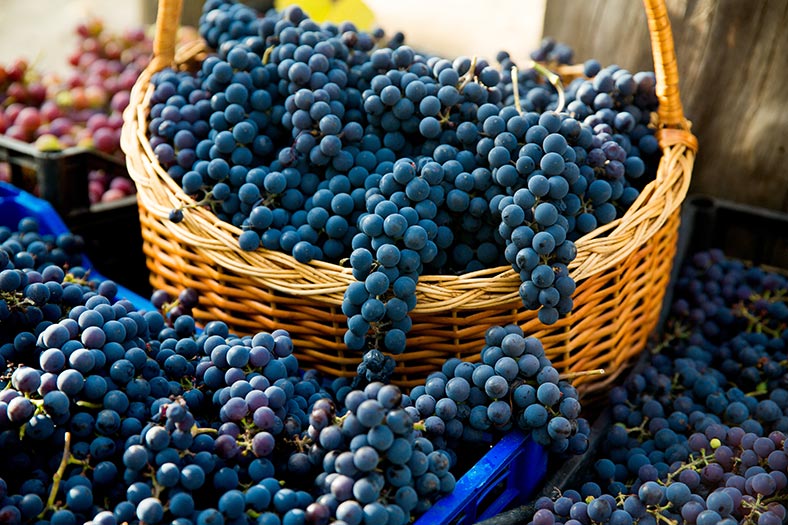
Oxidation, volatile acidity, bretts, mousiness: all of these odd terms can be used to describe a wine, but what do they mean exactly? And are they desirable features or defects to avoid?
‘Natural’ wine has been trendy for around a decade now, a staple in hipster wine bars and sometimes attracting top bidders at auction. Characterful on the nose and the palate, these cuvées carry curious features that some now actively seek in their glass, whilst others consider them defective. But what are these potential defects?
“I knew it was a ‘natural’ wine, farm-like on the nose with a fizzy, vinegar profile on the palate…” This is the sort of thing you often hear from certain wine enthusiasts. Does this mean that ‘natural’ wines are more prone to developing defects that lead them straight down the drain?
Let’s first have a look at what it means for a wine to be ‘natural’. For some, this is simply a cuvée made without any sulphur. In reality, it’s a bit more complicated than that, perhaps because there’s no official definition for natural wine, or any criteria to fulfil like in an appellation. According to the ‘Syndicat de Défense des Vins Nature’L’, perhaps the most reliable source in a movement with little structure, a natural wine should: be made from organic or biodynamic grapes, harvested by hand, with vinifications that involve wild yeasts and no chemical additives, no harsh techniques applied (eg inverse osmosis, flash-pasteurisation, tangential filtration), no sulphur during vinification, and a maximum of 30 mg/l of sulphur at the bottling stage.
Essentially, there is no real reason why a natural wine should be more defective than a conventional cuvée. There are many, different reasons for which a wine might become tainted, such as the use of under- or over-ripe grapes, even mouldy fruit. And whatever the philosophy of a given producer, their wine could turn out to be too oaky, excessively alcoholic, or over-extracted etc.
At the same time, it is true that natural production methods can run more risks for the resulting wine, since the vines are less protected. The specific ‘defects’ (we’ll get to their debated desirability) that can arise from such methods include:
Oxidation. If the nose of a white wine gives off strong primary notes of apple or pear, even cider, it’s likely that the cuvée has oxidated, and this won’t improve over time. If it’s a red wine, oxidation smells like acetone or nail varnish, with a more or less vinegary palate. The culprit here is often a lack of sulphur during vinification.
Volatile acidity. This can be difficult to distinguish from the acetone aromas mentioned above. Volatile acidity is actually present in all wines, but it causes an issue when there is too much of it. The law dictates that it must not surpass 0.98 g/l in red wine or 0.88 g/l in whites and rosés. Excessive volatile acidity is almost spicy on the nose with a burning aftertaste. Within the legal limits, this is a feature that can be beneficial for certain southern wines since it can refresh an otherwise heavy palate. If excessive in natural wines, this is again due to the absence or low dose of sulphur.
Brett. When your wine gives off powerful aromas that resemble ink, leather, or even stables, it is likely to be heavy on the Brettanomyces, a yeast that can overwhelm the others present in vinification. This fault isn’t specific to natural wines, but perhaps appears more often in these if, for example, the winery isn’t in perfect condition or if the absence of sulphur has let the Bretts flourish.
Mousey. This is a ‘deviance’ that has become trendy in recent years. It doesn’t appear immediately on the palate, but rather ‘retro-olfactively’, meaning after the wine has been swallowed. Mousiness can be explained as a taste close to sausage skin or popcorn. Its strength depends on the acidity of the taster’s saliva, and thus won’t have the same effect on two people enjoying the same wine. It is easier to detect in white wines than red. It is important to highlight that ‘mousiness’ is a defect that fades over time in the bottle, usually after 1-3 years.
There’s been quite a bit of debate around these defects. One the one hand, you’ve got those who disparage natural wine for its tendency towards deviant characteristics, and on the other are those who believe a totally flawless wine could never be truly ‘natural’. In reality, it is not impossible to craft an excellent natural wine, it is just a very demanding process, involving a perfectly healthy harvest, impeccable practice in the winery, and careful vinifications that avoid excessive manipulation.
Any wine that has a fault is likely to have been made by a vigneron who simply hasn’t yet mastered their craft. Luckily, there are more and more producers succeeding in making natural wines without the slightest fault, and this in almost every appellation. The phenomenon continues to grow, with talented wine makers getting inspired by natural producers who are already excelling in the sector. We can only hope that this pattern will persist, as we see more innovation in formerly niche wine production that has picked up momentum and is only gaining strength.



